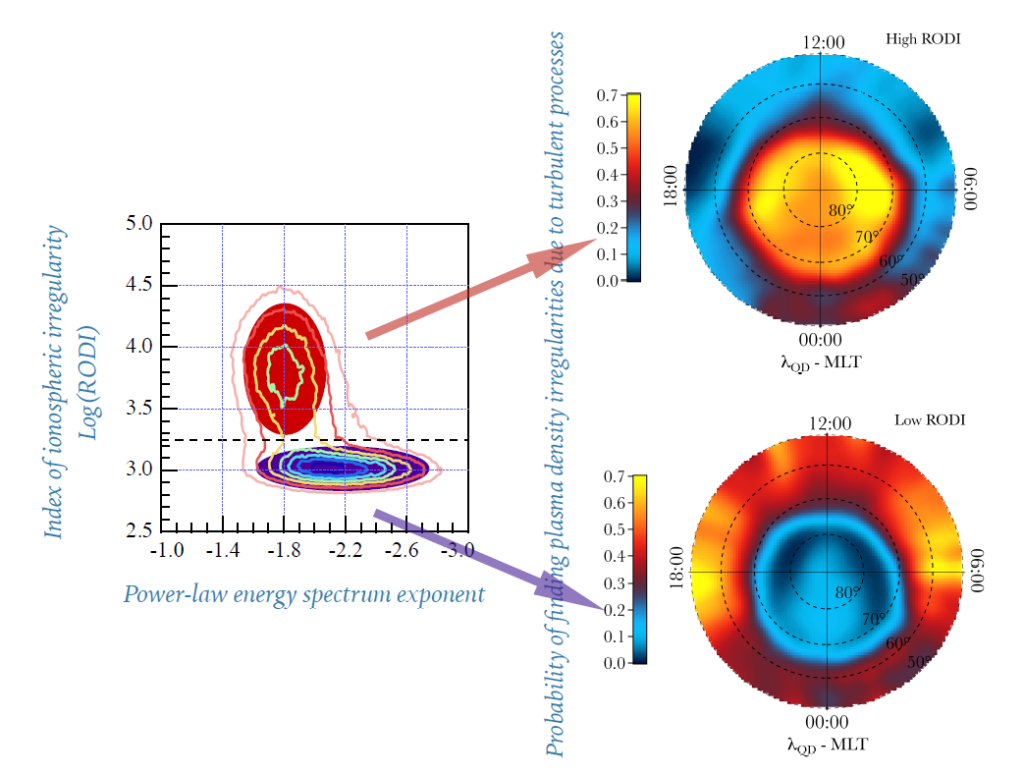Papers from SWICo members
P. De Michelis, G. Consolini, A. Pignalberi, R. Tozzi, I. Coco, F. Giannattasio, M. Pezzopane, and G. Balasis.
We selected about four years (April 2014-February 2018) of 1 Hz electron density measurements recorded on-board ESA Swarm A satellite, and we identified two different geomagnetic conditions according to the Auroral Electrojet (AE) index: quiet (AE<50 nT) and active (AE>300 nT). For both datasets, we evaluated the first- and second-order scaling exponents and an intermittency coefficient associated with the electron density fluctuations. Then, the joint probability distribution between each of these quantities and the rate of change of electron density index (RODI) was also evaluated.

We identified two families of plasma density fluctuations characterized by different mean values of both the scaling exponents and RODI, suggesting that different mechanisms (instabilities/turbulent processes) can be responsible for the observed scaling features. Furthermore, a clear different localization of the two families in the magnetic latitude – magnetic local time plane is found and its dependence on geomagnetic activity levels is analyzed. These results may well have a bearing about the capability of recognizing the turbulent character of irregularities using a typical ionospheric plasma irregularity index as a proxy.
Publication: P. De Michelis, G. Consolini, A. Pignalberi, R. Tozzi, I. Coco, F. Giannattasio, M. Pezzopane, and G. Balasis, Looking for a proxy of the ionospheric turbulence with Swarm data, Scientific Reports, 11, 6183, 2021. https://doi.org/10.1038/s41598-021-84985-1
